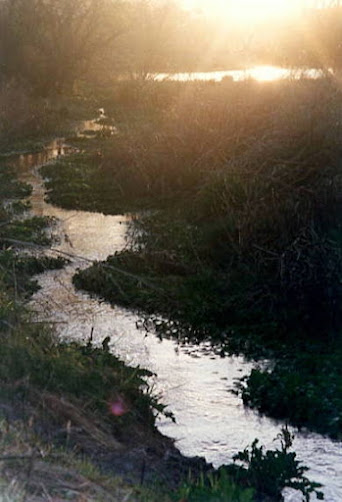The Dancehall Garden
The focus for the whole property will be on growing native plants that attract butterflies, especially those that feed adult Monarch butterflies and their caterpillars:
• There will be a 850 sq ft. “meadow style” garden behind the garage building, filled with several drought-tolerant Milkweed species and other wildflowers, along with native grasses;
• There will be two rain gardens- one at the front of the property and one behind the restroom building - that receive gutter water from the front porch and restroom building (as well as supplemental irrigation), filled with Showy Milkweed, Beggarticks, and other plants that grow well in moist soils;
• In the little “courtyard garden” between the buildings, which was gardened by Hack and Emma Mae Townsend for almost 50 years, there will be a be a variety of fragrant herbs, agaves, 1-2 species of Milkweed, and misc. native wildflowers that attract butterflies, hummingbirds, bees, and other pollinators.
For the past 5 years, I’ve been working in partnership with the Endangered Species Coalition in their efforts to increase the amount of milkweed growing in the Pacific Northwest, and we have been planting Showy Milkweed and other flowers in Seattle’s Magnuson Children’s Garden and Magnuson Community Garden each year as part of a “pollinator pathway” project. Here in Arivaca, I have gotten advice from local expert Coya Steele Silverlake to identify the types of milkweed that will maximize the potential to help Monarchs that pass through this area, and I have set three main goals for the dancehall garden project:
1. Supporting migrating Monarchs as they pass through southern Arizona on their way north in the spring, and on their way south in the fall to their wintering grounds in Mexico.
2. Demonstrating multiple ways to grow Milkweed and other native wildflowers in small and large garden spaces, in the hopes that the “pollinator pathway” idea will be adopted by other gardeners in this area too.
3. Eventually providing a supply for locally- grown flower seeds that I can give out free to other gardeners.
At the March 7th open house that Uno and I hosted at the Dancehall, quite a few people asked me if there was anything they could volunteer for to help with the dancehall restoration project, and I wasn’t prepared with a response. Well, now I am! If you have pollinator-attracting flowers or other native plants in your garden that you’d like to divide or propagate via a cutting to donate, or if you have a spot in your garden where you’d like to help grow seeds this spring to be transplanted into the garden later, or if you’d like to help me dig plants from my home garden to plant in the dancehall beds, please send me an email at arivacadancehall@gmail.com. April is a great time for making a new garden… and I can’t wait to get started! Thanks a million in advance if you’d like to help.
Photo credits:
- Monarch with spread wings: Kenneth Dwain Harrelson
- Map: Monarchwatch.org
- Monarch on Boneset plant: Yann Kemper





